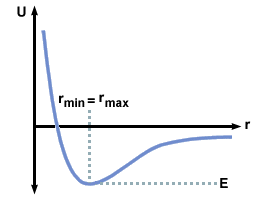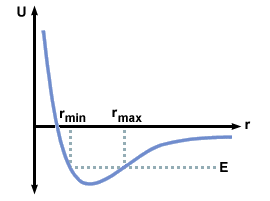Please wait while we process your payment
If you don't see it, please check your spam folder. Sometimes it can end up there.
If you don't see it, please check your spam folder. Sometimes it can end up there.
Please wait while we process your payment
Get instant, ad-free access to our grade-boosting study tools with a 7-day free trial!
Learn more



This site is protected by reCAPTCHA and the Google Privacy Policy and Terms of Service apply.
Create Account
Select Plan
Payment Info
Start 7-Day Free Trial!

Annual
2-49 accounts
$22.49/year + tax
50-99 accounts
$20.99/year + tax
Select Quantity
Price per seat
$29.99 $--.--
Subtotal
$-.--
Want 100 or more? Request a customized plan
You could save over 50%
by choosing an Annual Plan!

SAVE OVER 50%
compared to the monthly price!
| Focused-studying | ||
| PLUS Study Tools | ||
| AP® Test Prep PLUS | ||
| My PLUS Activity | ||
$22.49/month + tax
Save 25%
on 2-49 accounts
$20.99/month + tax
Save 30%
on 50-99 accounts
| Focused-studying | ||
| PLUS Study Tools | ||
| AP® Test Prep PLUS | ||
| My PLUS Activity | ||
No Fear provides access to Shakespeare for students who normally couldn’t (or wouldn’t) read his plays. It’s also a very useful tool when trying to explain Shakespeare’s wordplay!
Erika M.
I tutor high school students in a variety of subjects. Having access to the literature translations helps me to stay informed about the various assignments. Your summaries and translations are invaluable.
Kathy B.
Teaching Shakespeare to today's generation can be challenging. No Fear helps a ton with understanding the crux of the text.
Kay H.
No Fear provides access to Shakespeare for students who normally couldn’t (or wouldn’t) read his plays. It’s also a very useful tool when trying to explain Shakespeare’s wordplay!
Erika M.
I tutor high school students in a variety of subjects. Having access to the literature translations helps me to stay informed about the various assignments. Your summaries and translations are invaluable.
Kathy B.
Teaching Shakespeare to today's generation can be challenging. No Fear helps a ton with understanding the crux of the text.
Kay H.
Create Account
Select Plan
Payment Info
Start 7-Day Free Trial!
You will only be charged after the completion of the 7-day free trial.
If you cancel your account before the free trial is over, you will not be charged.
You will only be charged after the completion of the 7-day free trial. If you cancel your account before the free trial is over, you will not be charged.
Order Summary
Annual
7-day Free Trial
SparkNotes PLUS
$29.99 / year
Annual
Quantity
51
PLUS Group Discount
$29.99 $29.99 / seat
Tax
$0.00
SPARK25
-$1.25
25% Off
Total billed on Nov 7, 2024 after 7-day free trail
$29.99
Total billed
$0.00
Due Today
$0.00
Promo code
This is not a valid promo code
Card Details
By placing your order you agree to our terms of service and privacy policy.
By saving your payment information you allow SparkNotes to charge you for future payments in accordance with their terms.
Powered by stripe
Legal
Google pay.......



Please wait while we process your payment

Sorry, you must enter a valid email address
By entering an email, you agree to our privacy policy.
Please wait while we process your payment

Sorry, you must enter a valid email address
By entering an email, you agree to our privacy policy.
Please wait while we process your payment

Your PLUS subscription has expired
Please wait while we process your payment
Please wait while we process your payment

Orbits
We can write expressions for both the angular momentum and the total energy. If
pθ is the magnitude of the momentum in the tangential direction, then
since this perpendicular to  , L = rpθ. But pθ = mvθ = m
, L = rpθ. But pθ = mvθ = m = mr
= mr = mr
= mr .
Hence L = r(mr
.
Hence L = r(mr ) = mr2
) = mr2 . Hence:
. Hence:
L = mr2 |
E = 1/2m + +  - -  |
 and the right by L2, and canceling factors
of dt2 we find:
and the right by L2, and canceling factors
of dt2 we find:
    = =  - -  - -  |
 = =  (1 + εcosθ) (1 + εcosθ) |
ε =  |
We can also find the maximum and minimum values of r. The minimum occurs
where the expression for 1/r is a maximum. This is when cosθ = 1 and
the maximum is therefore  . Thus:
. Thus:
rmin =  |
 .
Thus:
.
Thus:
rmax =  |
We can also take the equation and using r2 = x2 + y2, and cosθ = x/r, we can write:
x2 + y2 =   - xε - xε |
The orbits are determined by the various values that ε can take.
When ε = 0, the expression for ε tells us that E = -  . The negative value of the energy just means that the
potential energy is more negative than the kinetic energy is positive. In this
case we have rmin = rmax =
. The negative value of the energy just means that the
potential energy is more negative than the kinetic energy is positive. In this
case we have rmin = rmax =  . The particle is trapped
at the very bottom of a potential well, and the radius does not change as it
goes around the orbit, hence forming a circle. Substituting this value for r
into the energy we have E = -
. The particle is trapped
at the very bottom of a potential well, and the radius does not change as it
goes around the orbit, hence forming a circle. Substituting this value for r
into the energy we have E = -  . Note that we could have derived
this directly by summing the potential energy we found for a circular orbit with
the kinetic energy (Gravitational Potential Energy).
. Note that we could have derived
this directly by summing the potential energy we found for a circular orbit with
the kinetic energy (Gravitational Potential Energy).
E = 1/2mv2 + U =  - -  = - = -  |



 . This describes a circle with
radius
. This describes a circle with
radius  .
.
Elliptical orbits occur when 0 < ε < 1. This means that -  < E < 0. Again the particle is trapped in a potential
well, oscillating now between rmin and rmax.
< E < 0. Again the particle is trapped in a potential
well, oscillating now between rmin and rmax.

 + +  = 1 = 1 |
 and b =
and b =  . This is an ellipse with its center at (- L2ε/GMm2(1 - ε2), 0), and with semimajor and semiminor axis length a and b
respectively. It can also be shown that one focus of this ellipse is at the
origin.
. This is an ellipse with its center at (- L2ε/GMm2(1 - ε2), 0), and with semimajor and semiminor axis length a and b
respectively. It can also be shown that one focus of this ellipse is at the
origin.
Please wait while we process your payment





